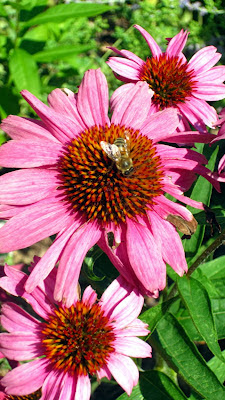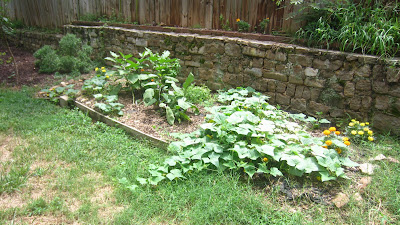I love it that his website is called "for the love of bees" which is what we all feel who keep them.
Les has been keeping bees for 40 years. He likes top bars and natural comb because he thinks we should trust the bees to know what they need to build in the hive and to know how to "run themselves." He doesn't use any treatments in the hives because he wants "clean honey" on his table with no poison.
Because Les was one of the original teachers of beekeepers in New Mexico, most beekeepers in New Mexico are treatment free and most use top bar hives. After my challenges with the top bar, I was very interested to hear how he manages his hives.

I always worry about crushing bees in pushing the top bars back together. Les says as you lower the bar, put your fingers under the ends of the bar and push the bees out of the way before you lower the bar. I'm certainly going to try that.
He also uses rather shallow top bar hives - his are 10 inches deep, 20 inches across, and 42 inches long.
The shallow depth helps keep the comb stable.
He doesn't use follower boards (says they stop air circulation) and uses side entrances on his top bars. He doesn't screen the bottoms of his TBHs because he said it's too much work to add the extra part. He thinks you need a false bottom under the screen if you use a SBB on a TBH.
To encourage the hive to "stretch" and grow, he opens up the hive by putting an empty bar between two drawn brood combs. This helps the hive stretch. He generally in winter moves the honey to the end of the hive for winter.
He said, as all of us who have struggled with top bars know, that top bar hives should be inspected about once every two weeks to manage the comb.
I enjoyed hearing his tales of growing up and working in the bee hives all his life. I plan to follow his web site and pay attention to what he is saying about these challenging hives. Maybe I'll try again next year.






























